Term 3 Chapter 5 | 1st EVS Environmental Science - Science in Everyday Life | 1st EVS Environmental Science : Term 3 Unit 5 : Science in Everyday Life
Chapter: 1st EVS Environmental Science : Term 3 Unit 5 : Science in Everyday Life
Science in Everyday Life
UNIT 5
Science in Everyday Life
Learning
Objectives
The
learners
•
Name different kinds of clothes
•
Recognise the importance of clothing
•
Identify the types of clothes to suit different weather conditions
Salim: "Parveen!
What are you looking at?"
Parveen:
"I am looking at the dresses."
Salim: "Which
is your favourite dress?"
Parveen:
"I like skirts. What about you?"
Salim: "I
like shirts and shorts."
Father : "Come,
let us look at various kinds of clothes and buy what we want."
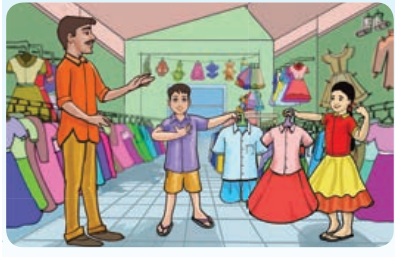
Cloth
Material
that is used to make dresses, towels and bedsheets is cloth.
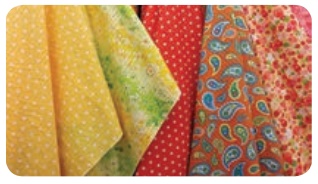
Clothes
Dresses
that we wear
either stitched (e.g., shirt, skirt) or unstitched
(e.g.,
dhoti, saree) are clothes.
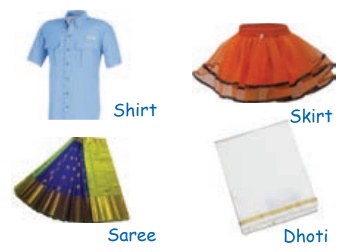
Uses of Cloth
The
following items are made from cloth.
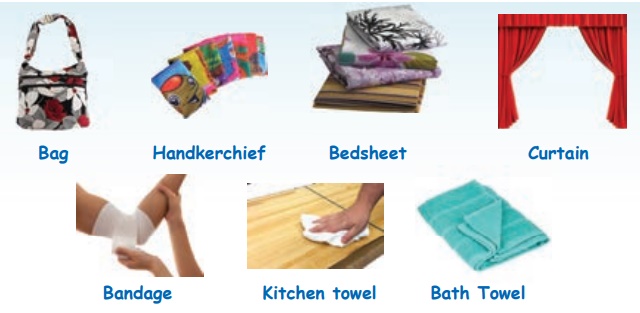
Match the related pairs and name them.
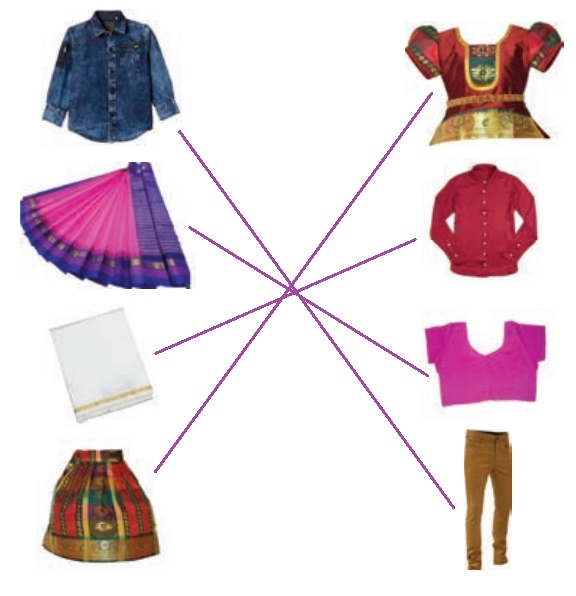
Story of Cloth
Early
man used clothes made of leaves and animal skin.
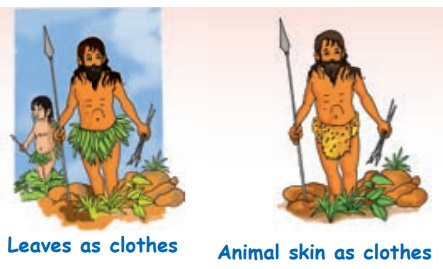
The
clothes we wear nowadays are made of different materials like cotton, wool and
silk.
We
get cotton from the cotton
plant, from which we make cotton clothes.

We
get wool from sheep,
from which we make woollen clothes.

We
get silk from the silkworm,
from which we make silk clothes.

Match
the following.
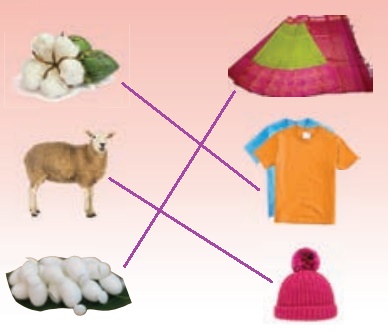
Clothes and Seasons
Why do we wear clothes?
We
wear clothes to protect our body from heat, cold, rain, dust, insects, germs
and small injuries.
We
wear different types of clothes in different seasons.
During summer
the days are hot.
We wear cotton
clothes to keep us cool.
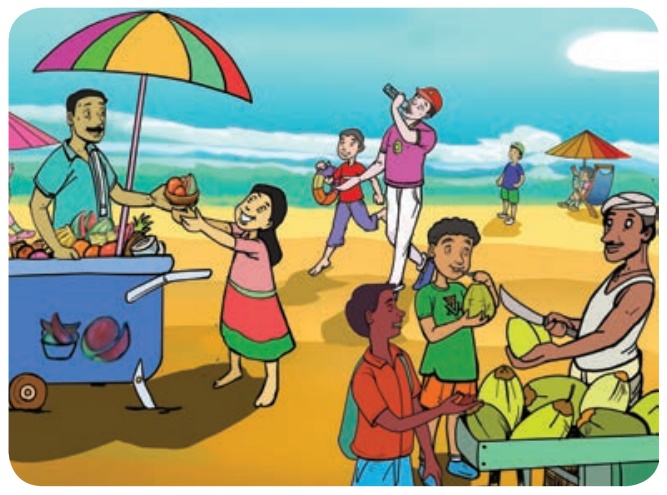
During winter
the days are cold.
We wear woollen
clothes to keep us warm.
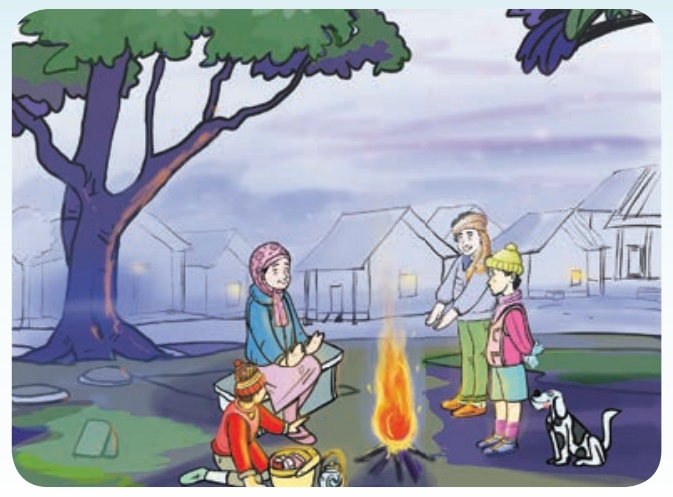
Some
days of the year are rainy.
We
wear raincoats
to keep as dry. We also use an umbrella.
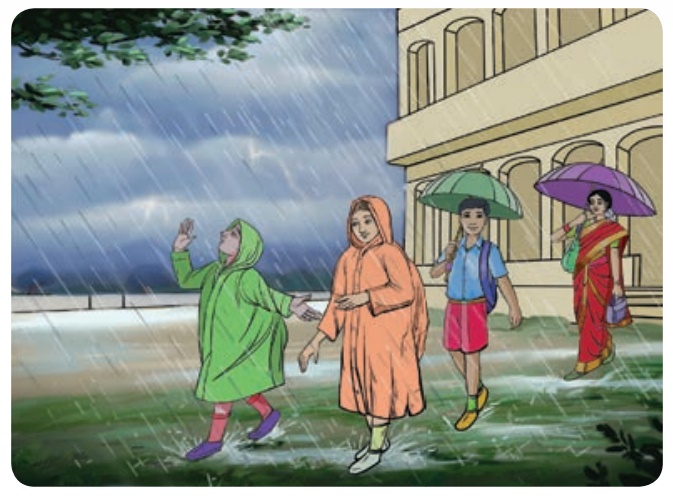
Write
"W" for the winter clothes and "S" for the summer clothes.

You
are going to the hills where it is very cold. What special kind of clothes will
you need there? Put a tick (✔)
mark.

Types of Clothes
Father: "Hi Salim, you are looking very
smart in this dress."
Salim: "Thank you. This is my new
uniform. All students wear uniforms when they go to school."
Father: "Good. Have you seen any other people
wearing uniforms?"
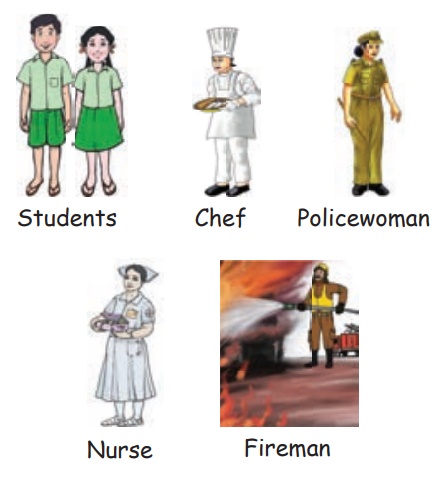
Washing
Clothes
The
clothes we wear should be neat and clean. When we dress neatly, we look smart.
Steps of washing
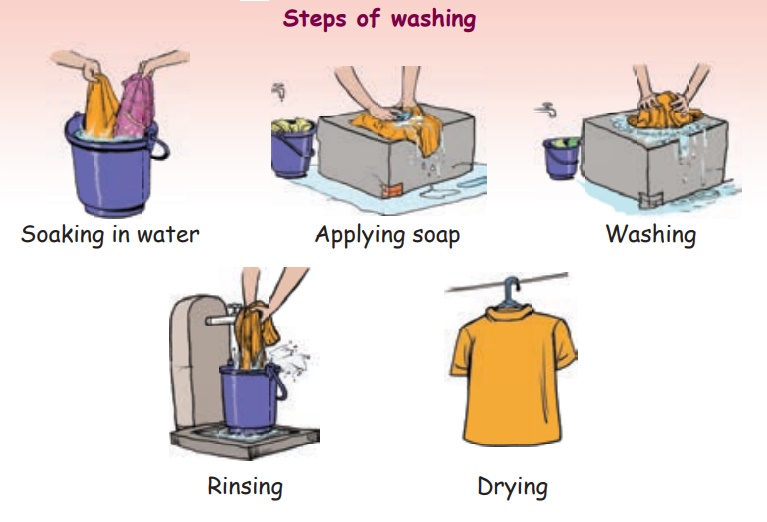
Match the people with
their uniforms by drawing a line.

Special
Clothes
When
people act in a play or give a dance performance they wear special clothes
called costumes.
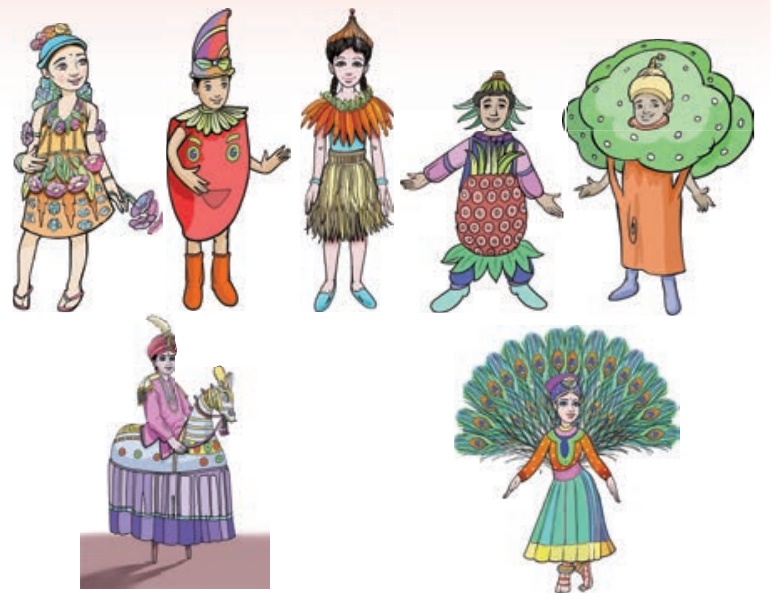
People in different parts of India
wear different kinds of dresses.
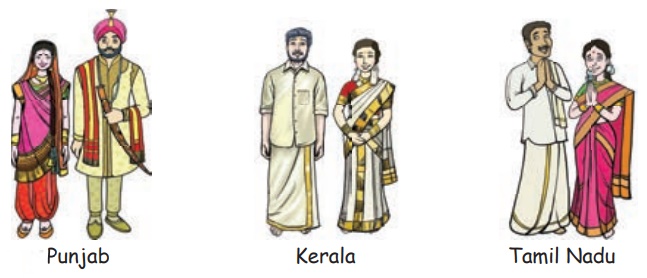
You are given a towel. How can you use it? Show the various
actions- for example, wiping, wearing it as a dhoti, turban, etc.
Related Topics